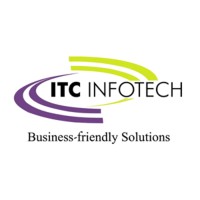Company Cyber Security Posture
NANA
NA Company Details
NA
NA
NA
NA
NA
NA
Scan still pending
NA
NA
Between 200 and 800
This score is AI-generated and less favored by cyber insurers, who prefer the TPRM score.
 NA Global Score
NA Global Score.png)

Company Scoring based on AI Models
| Model Name | Date | Description | Current Score Difference | Score |
|---|---|---|---|---|
| AVERAGE-Industry | 03-12-2025 | This score represents the average cybersecurity rating of companies already scanned within the same industry. It provides a benchmark to compare an individual company's security posture against its industry peers. | N/A | Between 200 and 800 |
Company Cyber Security News & History
| Entity | Type | Severity | Impact | Seen | Url ID | Details | View |
|---|
Company Subsidiaries

NA
Access Data Using Our API

Get company history
.png)
NA Cyber Security News
FPT and Cymotive Form Strategic Alliance to Advance Automotive Cybersecurity Innovation
Founded in 2016 and driven by a team of elite cybersecurity specialists, Cymotive empowers manufacturers, suppliers, and automotive technology ...
FPT Achieves ISO/SAE 21434 Certification for Automotive Cybersecurity
Global IT corporation FPT has obtained the ISO/SAE 21434 certification, an internationally recognized standard for cybersecurity in road ...
Top 10 Tech Companies to Work for in Viet Nam in 2024
Discover the top 10 tech companies to work for in Viet Nam in 2024. Explore company history, benefits, culture, and notable projects.
FPT Software, VinCSS to accelerate cybersecurity in automotive industry
Established in 2018, VinCSS is a pioneering technology startup in the cybersecurity industry, specializing in identity and access management, IT ...
Cybersecurity in healthcare: practical actions to minimise exposure to cyber threats
Australian healthcare organisations face rising cyber threats, with the sector being the most-targeted non-government industry in 2023-24, ...
Metrodata & FPT launch JV to lead cybersecurity & AI transformation in Indonesia
As Indonesia's largest IT player, Metrodata brings deep local market insights, while FPT, a global leader in digital transformation company, ...
Top 10 Tech Internships Offered in Viet Nam
Vietnam is quickly emerging as a tech hub, with the IT sector projected to reach $18 billion by 2024. Top tech internships, such as those at ...
Akamai and FPT Partner to Help Customers Build and Support Cloud-Native Applications
The collaboration between Akamai and FPT aims to empower organizations to fully leverage cloud solutions designed to operate at scale, closer to ...
How FPT Software is expanding its footprint in APAC
Vietnamese IT services provider FPT Software is seeing significant growth in its business across the Asia-Pacific region, driven by its diverse ...

NA Similar Companies

Amadeus
We make the experience of travel better for everyone, everywhere by inspiring innovation, partnerships and responsibility to people, places and planet. Our technology powers the travel and tourism industry. We inspire more connected ways of thinking, centered around the traveler. Our platform c

Tech Mahindra
Tech Mahindra offers technology consulting and digital solutions to global enterprises across industries, enabling transformative scale at unparalleled speed. With 150,000+ professionals across 90+ countries helping 1100+ clients, TechM provides a full spectrum of services including consulting, info

ITC Infotech
ITC Infotech is a global technology solution and services leader providing business-friendly solutions, that enable future-readiness for clients. We seamlessly bring together digital expertise, strong industry-specific alliances, and deep domain expertise from ITC Group businesses. Our solutions and

Minsait
We are one of the world's leading consultancies in technological services for companies and the public sector. With headquarters in Spain and presence in more than 100 countries, we combine experience in AI, data, cloud and cybersecurity to help companies and organizations generate a positive impact

Nityo Infotech
Nityo Infotech (Nityo) is a Global Technology Solutions and Services organisation. Headquartered in US with deep imprints in LATAM, APAC, EUROPE/CIS & MIDDLE EAST & AFRICA. Nityo is powered by 31,000+ employees across 41 countries serving enterprises across industries like Banking, Insurance,

UST
UST is a global digital transformation solutions provider. For more than 20 years, UST has worked side by side with the world’s best companies to make a real impact through transformation. Powered by technology, inspired by people and led by purpose, UST partners with their clients from design to op

Frequently Asked Questions
Explore insights on cybersecurity incidents, risk posture, and Rankiteo's assessments.
NA CyberSecurity History Information
How many cyber incidents has NA faced?
Total Incidents: According to Rankiteo, NA has faced 0 incidents in the past.
What types of cybersecurity incidents have occurred at NA?
Incident Types: The types of cybersecurity incidents that have occurred include .
Additional Questions
What Do We Measure?
















Every week, Rankiteo analyzes billions of signals to give organizations a sharper, faster view of emerging risks. With deeper, more actionable intelligence at their fingertips, security teams can outpace threat actors, respond instantly to Zero-Day attacks, and dramatically shrink their risk exposure window.
These are some of the factors we use to calculate the overall score:
Identify exposed access points, detect misconfigured SSL certificates, and uncover vulnerabilities across the network infrastructure.
Gain visibility into the software components used within an organization to detect vulnerabilities, manage risk, and ensure supply chain security.
Monitor and manage all IT assets and their configurations to ensure accurate, real-time visibility across the company's technology environment.
Leverage real-time insights on active threats, malware campaigns, and emerging vulnerabilities to proactively defend against evolving cyberattacks.




